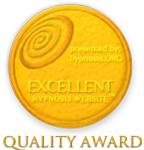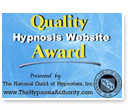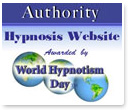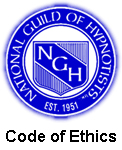
by Charles Curtis
Today I forgot to remember that I was supposed to favor my right-hand’s pinkie finger because I caught it in the infernal mechanism of my sister’s sofa bed several weeks ago, and the resulting unexpected motion had exceeded my finger’s design limits.
That’s because the healing process is far enough long that, even though there is still some visible swelling and slight pain if I bend it too much, the discomfort of the original incident is gone, so it is out of my awareness.
This is a microcosm of the healing process in general.
Whether we are healing physically, emotionally, spiritually, financially, or in some other way, “healing is the process of forgetting to remember that something is wrong”.
So whether the pain came from a toe that you stubbed 5 minutes ago, or from a father’s drunken abuse 5 decades ago, the outcome is the same, “healing is the process of forgetting to remember that something is wrong.”
In the field of NLP, we do this by extinguishing the old stimulus-response pairs linked up to the undesired experience of pain, and in their place setting up new stimulus-response patterns that feel good.
One of the easiest ways to do this is “double-anchoring”. In our NLP classes, we teach this exercise and have the subjects:
- Use the knees for anchors
- Anchor a negative memory on one side
- Anchor a positive anchor on the other
- Stack multiple positive anchors on the positive knee if necessary until the positive outweighs the negative.
- Then fire off both knees together and hold for about a minute.
- And the negative anchor will disappear, as its energy is outweighed by the positive
If you ask the subject, immediately afterwards, to fire off the anchor on what used to be the negative knee, the client will find that s/he will “forget to remember that something is wrong”, instead reporting a brand new point of view about that issue that is, somehow, softer, more peaceful, more relaxed, more positive, and more resourceful.
When double-anchoring works, the results can be spectacular and very impressive to the client. Just like any NLP intervention, you need to future pace or otherwise test that you’ve neutralized all the energy related to this issue, so that there isn’t some trigger out there that could still tie back into that old symptom complex.
This is the same result that you would get if you
- Had the client do a complete EFT tapping sequence on that issue until the negative energy collapsed
- Then tapped in the energy from a positive memory
It’s also the same result you would get if you used my “EFT With Positive Appreciation” procedure, where
- The negative energy of this problem is tapped on alternately.
- Between a list of things that the person loves about life.
- Raising the degree of empowerment of the client incredibly fast on a calibrated scale.
This last procedure is especially enlightening, as it provides some degree of external calibration as you see the client extremely rapidly climbing the emotional scale used for measurement in the exercise.
However, the overall concept applies to any and all NLP procedures. As another example, very spectacular results can be achieved with any of the NLP procedures that contain a loop to discover “the positive intention of the positive intention of the positive intention of the original negative intention, etc”. Continuing this for a number of loops can literally lead the client into an ecstatic state.
A particularly artful example of this is Core Transformation, described by Connirae Andreas in the book of that name. To me this procedure is a joy to use, as it starts with the client’s current trouble, and usually only needs a few minutes to get the client into a rapidly escalating series of positive intentions that very quickly lead to a state of mind that often seems to have a spiritual quality to it that is very healing.
So I’d like to recommend that, the next time you sit down with a client to do an NLP session, keep in mind that your objective is to get the client to “forget to remember that something is wrong”.
Then watch that unfold, as you work artfully with your toolbox of NLP techniques. And feel lucky that we have the technology to do this. Because not so many years ago, hypnotists only had paradigms to work with that were heavy and hard, starting with the onerous process of hanging the millstone of a diagnosis of mental illness around the client’s neck, and continuing with slow progress through a series of sessions that could drag on for months or years with little relief from the pain.
Many traditional hypnotists have come to wish that there is a better way. NLP is one of those better ways, as it sets your client free from the heaviness of the past, and it does it fast.
So remember, that every time you help your clients “forget to remember that something is wrong”, you have given them their life back. You can see it in their faces as they get up out of the chair. That smile on their face is a gift beyond measure, to them, and to you.






